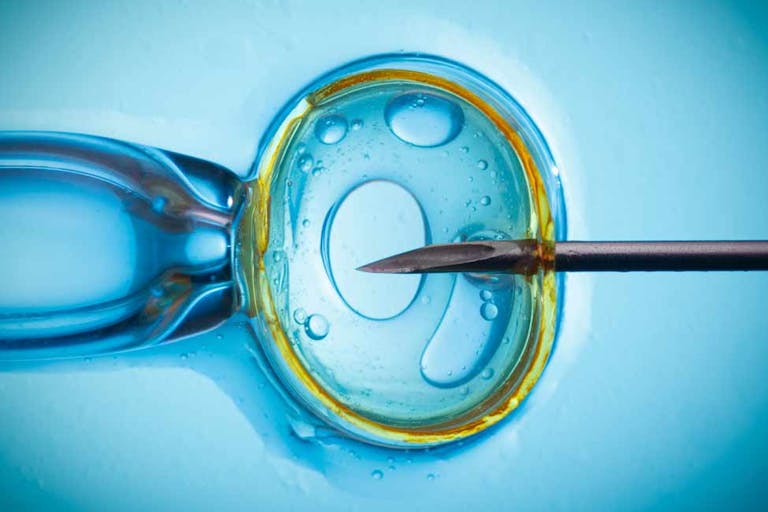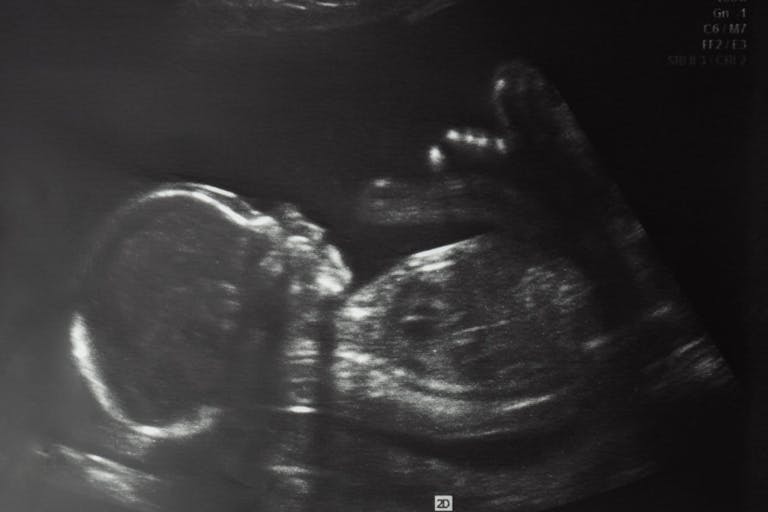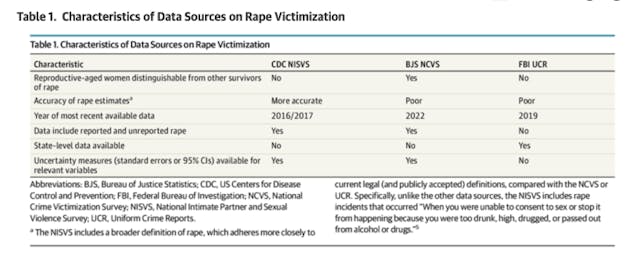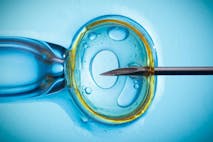
Abu Dhabi expands fertility industry to become 'IVF capital of the world'
Angeline Tan
·
Is the new ‘research’ on rape-related pregnancies reliable?
On Wednesday, January 24, JAMA Internal Medicine published a research letter titled “Rape-Related Pregnancies in the 14 US States With Total Abortion Bans.” The specific states included are Idaho, Indiana, Mississippi, West Virginia, and North Dakota — all of which have rape exceptions built in to their pro-life laws — as well as Alabama, Arkansas, Kentucky, Louisiana, Missouri, Oklahoma, South Dakota, Tennessee, and Texas, whose pro-life laws do not include abortion exceptions for children conceived in rape. Several media outlets and commentators, including NPR, have reported on the research, generally using it to support a pro-abortion position.
The research letter claims to “estimate[] rape-related pregnancies by state to assess how abortion bans affected survivors of rape.” Emphasis is added there because it’s important to read that again. The letter arrives at a final number of “64,565 [estimated rape-related] pregnancies during the 4 to 18 months that bans were in effect.”
To be clear, the letter purports to tie the number of pregnancies that occurred after a rape to… the fact that a state’s laws restrict abortions.
And this is where everything about this “research letter” becomes so strange, beyond the fact that its methodology is also little more than guesswork.
Some questions arise as one reads this research letter:
Are the authors attempting to insinuate that rape, or pregnancy due to rape, happens more frequently in pro-life states than in pro-abortion states (the latter of which they did not choose to research) because pro-life laws protect preborn children after they are conceived? (It should be obvious to anyone that laws protecting preborn children from abortion do not cause rape or pregnancy.)
Are they attempting to insinuate that nearly 65,000 women were denied an abortion in pro-life states during the period in question — something which they also did not choose to research? (It is a rather bold assumption that all or even most of these women would have sought or wanted an abortion.)
Do they think pro-life legislators don’t believe in the existence of rape-related pregnancies?
According to an emailed newsletter by abortion advocate Jessica Valenti, she feels the last point is particularly relevant. She claims:
One of the many lies that anti-abortion activists and legislators tell is that rape-related pregnancies are rare. It’s a claim designed to hide their utter cruelty, and to pivot when asked about abortion ban exceptions.They’re not going to be able to hide from this number: 65,000. That’s the estimated number of rape-related pregnancies in anti-choice states since they passed abortion bans. 65,000.
But what’s curious here is why only states with “abortion bans” were researched. Perhaps Valenti hinted at it in her email. The point is to make the laws protecting preborn humans from unjust execution appear unjust themselves. Abortion advocates seem more angered at the idea of pregnancy as a result of sexual assault (and that a woman might have to travel elsewhere to kill her child) than at the reality of sexual assault itself.
In other words, the whole point of the study is to show the “utter cruelty,” as Valenti put it, of a “ban” on killing children conceived due to sexual assault.
What’s interesting, though, is that five of those 14 states researched actually do have “exceptions” in their laws allowing children conceived in rape to be killed by abortion. However, the JAMA researchers discount this, writing: “Although 5 of these states allow exceptions for rape-related pregnancies, stringent gestational duration limits apply, and survivors must report the rape to law enforcement, a requirement likely to disqualify most survivors of rape, of whom only 21% report their rape to police.”
It is important to note that the source the authors used to arrive at the 21% statistic is itself based on estimated data — as are all of their other numbers in this research.
FLAWED METHODOLOGY
Back to the numbers: to arrive at 64,565 pregnancies due to rape, researchers estimated the total number of rapes committed in the 14 “abortion ban” states in question by utilizing rape frequency estimates generated by the Centers for Disease Control and Prevention (CDC), the Bureau of Justice Statistics (BJS), and the Federal Bureau of Investigation (FBI). They then used estimates of the percentage of vaginal rapes from a 2018 study to narrow the total number of rapes down to just those that could result in pregnancy. They went on to estimate the number of pregnancies that may have resulted from those vaginal rapes by applying a formula derived from CDC data and data obtained from a 1996 study on rape-related pregnancy, both of which are also based on estimates.
In other words, this research letter presents estimates based on estimates subtracted from estimates multiplied by an estimate. How accurate are those estimates? According to Dr. Michael New, assistant professor of practice at the Busch School of Business at the Catholic University of America and senior associate scholar at the Charlotte Lozier Institute:
To call those figures an exaggeration would be an understatement…. First, the authors of the study claim that approximately 12.5 percent of rapes result in a conception. That is an exceptionally high figure. The results of a survey of over 4,000 women that was published in the American Journal of Obstetrics and Gynecology in 1996 puts that figure at closer to 5 percent.
New also notes that the study authors relied on rape frequency statistics that “have been criticized for significantly overestimating the incidence of rape,” and which are “over four times higher than the estimates provided by the Department of Justice’s National Crime Victimization Survey and over ten times higher than FBI data on the number of rapes reported to law enforcement.”
Even the authors themselves admit to the considerable limitations involved in their endeavor and advise that their results should be “interpreted cautiously.”
In addition, no states without abortion bans were studied for comparison.
What’s more, the authors openly acknowledge the weaknesses of each of their primary data sources, characterizing two of them as having “poor” accuracy:

To be fair, it is difficult to obtain solid data on rape and the pregnancies that come about as a result, simply due to the intimate nature of the crime itself and the complex emotional and psychological responses of victims – as a result, many victims decline to report having been raped, which skews the accuracy of the available statistics.
Article continues below
Dear Reader,
In 2026, Live Action is heading straight where the battle is fiercest: college campuses.
We have a bold initiative to establish 100 Live Action campus chapters within the next year, and your partnership will make it a success!
Your support today will help train and equip young leaders, bring Live Action’s educational content into academic environments, host on-campus events and debates, and empower students to challenge the pro-abortion status quo with truth and compassion.
Invest in pro-life grassroots outreach and cultural formation with your DOUBLED year-end gift!
HEAVILY BIASED AGENDA
You may reasonably be wondering why anyone should undertake this endeavor if the source data are so limited and potentially unreliable. After all, recent research on the number of abortions in which rape is cited as a primary reason already exists.
Instead, this study looked at the number of pregnancies resulting from rape — not the number of abortions obtained for the reason of rape — which makes this research letter little more than an attempted smear and “shame tactic” against pro-life states. After all, one would reasonably assume that pregnancies can occur after rape in both pro-life and pro-abortion states.
The point, for researchers, was apparently to use the number of rape-related pregnancies solely from pro-life states to push the idea that it is cruel for state governments to attempt to protect every child in the womb as a valuable human being, regardless of the means of conception.
Not only does the research letter ignore the number of abortions sought for the reason of rape, it also doesn’t even attempt to account for rape victims who choose life instead of abortion – like Steventhen’s mother, or Kathy’s mother, or Rebecca’s mother, or Crystal, or Paula, or thousands of others.

The existing estimates regarding the number of abortions in which rape is cited as a primary reason are already broken down by individual state, and are superior to anything presented by the JAMA Internal Medicine research letter.
So, what is even the point of this publication? Why undertake this research in the first place?
The answer to the “why” question can be found both at the top of the JAMA Internal Medicine article (where the letter is categorized as relating to “Health and the 2024 US Election”) and by scrutinizing the researchers themselves.

The principal author is Dr. Samuel L. Dickman. NPR describes him as an “abortion provider” and parenthetically notes that he “is also the medical director of Planned Parenthood Montana and a plaintiff in several lawsuits challenging abortion restrictions in Montana.”
The second listed author – Kari White, PhD – has authored a number of scholarly articles about abortion, including one which argues that the Hyde Amendment (which prohibits federal taxpayer funding for abortion) imposes “risks” upon low-income women. According to the conflict of interest disclosure at the bottom of the JAMA research letter, “Dr White reported personal fees from the Society of Family Planning Stipend as well as grants from the Susan Thompson Buffett Foundation[.]” She has also received funding from the Packard Foundation. The Society of Family Planning is an openly pro-abortion organization; both the Susan Thompson Buffett Foundation and the Packard Foundation were original investors in Danco, which manufactures the abortion pill.
The principal authors of this research letter have a clear pro-abortion agenda. They also derive financial gain from abortion – one of them quite directly by personally committing abortions, and the other by taking money from organizations which promote and profit from abortion.
Making abortion more widely available and frequently obtained is in the authors’ financial interests. And the JAMA article itself connects this research to the forthcoming U.S. elections.
Given that this research doesn’t really add any reliable, new scholarly information to that which is already available, and given the emotionally charged nature of rape itself, this research letter can perhaps be most reasonably interpreted as an attempt to enflame voters’ emotions, sway their opinions against pro-life laws (with nonsensical and sloppy research), and to encourage votes in favor of upcoming pro-abortion state-level ballot measures and referendums.
There is no other readily discernible purpose for this publication, and the information contained within it should be interpreted through that lens.
Finally, the article is not merely biased, but it disregards the fundamental reason pro-life laws exist in the first place: to protect innocent human beings from homicide, which is never acceptable, regardless of the circumstances of conception.
Editor’s Note, 1/26/24: This article was updated after its original publication with additional information.
Live Action News is pro-life news and commentary from a pro-life perspective.
Contact editor@liveaction.org for questions, corrections, or if you are seeking permission to reprint any Live Action News content.
Guest Articles: To submit a guest article to Live Action News, email editor@liveaction.org with an attached Word document of 800-1000 words. Please also attach any photos relevant to your submission if applicable. If your submission is accepted for publication, you will be notified within three weeks. Guest articles are not compensated (see our Open License Agreement). Thank you for your interest in Live Action News!

Angeline Tan
·
International
Angeline Tan
·
Pop Culture
Cassy Cooke
·
International
Cassy Cooke
·
Analysis
Cassy Cooke
·
Analysis
Angeline Tan
·
International
Bettina di Fiore
·
Human Rights
Bettina di Fiore
·
Politics
Bettina di Fiore
·
Human Interest
Bettina di Fiore
·
Activism
Bettina di Fiore
·